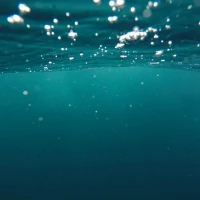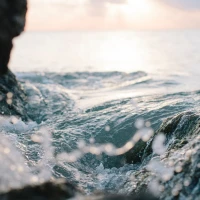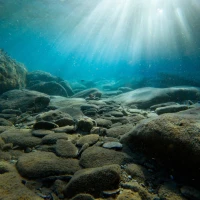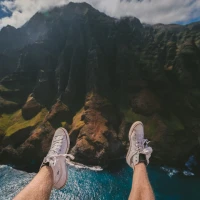Have you ever wanted to explore the magical world beneath the waves? Snorkeling is a popular water activity that allows you to do just that. Whether you are a beginner or an experienced diver, mastering snorkeling techniques can enhance your underwater adventure and make it truly unforgettable. In this article, we will delve into the world of snorkeling and provide you with expert tips and techniques to dive like a pro.
The Beauty of Snorkeling
Snorkeling offers a unique and accessible way to explore the mesmerizing underwater world. It allows you to observe vibrant coral reefs, encounter exotic marine life, and experience the tranquility of being submerged in a different realm. Unlike scuba diving, snorkeling requires minimal equipment and is suitable for individuals of all ages and skill levels. With the right techniques and knowledge, you can maximize your snorkeling experience and create memories that will last a lifetime.
Snorkeling vs. Scuba Diving: Understanding the Difference
Before we dive into the techniques, it’s important to understand the difference between snorkeling and scuba diving. While both activities involve exploring the underwater world, there are key distinctions between them.
Snorkeling:
- Snorkeling involves swimming near the water’s surface and breathing through a snorkel tube.
- It is relatively easy to learn and requires minimal equipment.
- Snorkelers observe the underwater environment from the surface and can only dive a few feet deep.
- Snorkeling is popular among beginners, families, and individuals who want to enjoy a casual underwater experience.
Scuba Diving:
- Scuba diving involves using a self-contained underwater breathing apparatus (SCUBA) to explore deeper depths.
- It requires specialized training, certification, and additional equipment.
- Divers can descend deep into the water, often exceeding 100 feet.
- Scuba diving offers opportunities for longer dives, underwater photography, and exploration of wrecks and caves.
- It is suited for individuals seeking a more immersive and adventurous underwater experience.
Now that we have clarified the distinction between snorkeling and scuba diving, let’s explore the techniques that will help you snorkel like a pro.
Essential Snorkeling Gear
Before you embark on your snorkeling adventure, it’s crucial to have the right gear. Here are the essential snorkeling equipment that will enhance your experience:
-
Snorkel: Choose a high-quality snorkel that fits comfortably in your mouth and allows for easy breathing. Look for a purge valve that helps clear any water that may enter the snorkel.
-
Mask: Invest in a well-fitting mask that provides a clear field of vision. Look for a mask with a silicone skirt and a tempered glass lens for durability.
-
Fins: Snorkeling fins, also known as flippers, help you swim more efficiently by increasing your propulsion through the water. Look for fins that fit snugly but not too tight to avoid discomfort.
-
Wetsuit or Rashguard: Depending on the water temperature, consider wearing a wetsuit or a rashguard to protect your skin and provide insulation.
-
Buoyancy Vest: If you are not a confident swimmer or prefer extra buoyancy, consider wearing a buoyancy vest that can provide additional support while snorkeling.
Ensuring that you have the right gear will increase your comfort and safety while snorkeling, allowing you to fully immerse yourself in the underwater world.
Snorkeling Techniques for Beginners
If you are new to snorkeling, mastering the basic techniques is essential to ensure a smooth and enjoyable experience. Follow these steps to dive like a pro:
1. Choose a Suitable Location
Selecting the right location is crucial for a successful snorkeling experience. Look for destinations that offer clear, calm waters and abundant marine life. Some popular snorkeling destinations include:
- The Great Barrier Reef, Australia
- The Maldives
- The Red Sea, Egypt
- The Florida Keys, USA
- Phi Phi Islands, Thailand
When choosing a location, consider factors such as water visibility, weather conditions, and accessibility.
2. Practice Breathing Techniques
Breathing through a snorkel tube can initially feel unnatural for beginners. Practice breathing techniques before entering the water to ensure comfort and confidence. Here are some tips:
- Breathe slowly and deeply through your mouth, relaxing your jaw and ensuring a sealed fit with the snorkel mouthpiece.
- Exhale fully to clear any water that may have entered the snorkel.
- If water enters the snorkel, avoid forcefully exhaling, as it can cause more water to enter. Instead, gently blow out to clear the snorkel.
By practicing breathing techniques on land, you will be better prepared for underwater exploration.
3. Adjust Your Mask
A properly fitted mask is essential for a clear view of the underwater world. Follow these steps to adjust your mask:
- Place the mask on your face, covering your eyes and nose.
- Inhale gently through your nose to create a suction effect, ensuring a secure fit.
- Adjust the straps until the mask feels comfortable and forms a watertight seal.
Ensure that the mask does not press too tightly against your face, as it can lead to discomfort and leave marks.
4. Enter the Water Gracefully
When entering the water, it’s important to do so with grace and caution. Here’s how to enter the water smoothly:
- Walk slowly into the water until it reaches waist-deep.
- Put on your fins while in the water to avoid tripping or damaging them on the shore.
- Once you have your fins on, swim smoothly through the water, keeping your head above the surface.
By entering the water gracefully, you minimize the risk of accidents and ensure a seamless transition into snorkeling.
5. Perfect Your Floating Technique
Proper buoyancy control is key to successful snorkeling. Achieving a neutral buoyancy will help you conserve energy while exploring underwater. Follow these steps to perfect your floating technique:
- Lie flat on your stomach in the water, with your feet stretched out behind you.
- Slowly kick your fins in a controlled manner to maintain a stable position.
- Keep your head down and relaxed, allowing the water to support your body weight.
Practice floating in shallow waters before attempting deeper dives. With time and practice, you’ll be able to maintain a comfortable position without excessive kicking or splashing.
Advanced Snorkeling Techniques
Once you have mastered the basic techniques, you may want to take your snorkeling skills to the next level. Here are some advanced snorkeling techniques that will elevate your underwater experience:
1. Equalizing Your Ears
Equalizing your ears is crucial when diving to deeper depths. As you descend, the water pressure increases, causing discomfort in your ears. To equalize the pressure, follow these steps:
- Pinch your nose with your fingers to close the nostrils.
- Gently blow through your nose while keeping your mouth closed.
This technique helps equalize the pressure in your ears and prevents discomfort or potential injury.
2. Clearing Your Mask
Water may enter your mask while snorkeling, compromising visibility. Here’s how to clear your mask:
- Tilt your head backward slightly.
- Place two fingers on the top of the mask, just above your forehead.
- Simultaneously exhale through your nose while lifting the bottom of the mask slightly.
This technique allows the water to drain out while maintaining a seal with your face.
3. Streamlining your Body
Streamlining your body reduces drag, allowing you to move effortlessly through the water. Here are some tips to streamline your body:
- Keep your body straight and aligned, minimizing unnecessary movements.
- Extend your arms in front of you, reducing resistance and creating a streamlined shape.
- Straighten your legs and point your toes, minimizing drag caused by bent knees.
By implementing these techniques, you will glide smoothly through the water, conserving energy and maximizing your snorkeling experience.
Safety Tips for Snorkeling
While snorkeling is a rewarding activity, it is important to prioritize safety. Here are some safety tips to ensure a safe and enjoyable snorkeling experience:
-
Choose a Buddy: Always snorkel with a buddy. Having someone by your side enhances safety and allows for assistance in case of emergencies.
-
Know Your Limits: Only snorkel in areas that match your skill level and physical fitness. Avoid strong currents, unfamiliar waters, and challenging conditions.
-
Stay Hydrated: Dehydration can occur quickly while snorkeling. Drink plenty of water before and after your snorkeling adventure to stay properly hydrated.
-
Respect Marine Life: Observe marine life from a distance, avoiding any disturbance or damage to the environment. Do not touch or harass marine creatures.
-
Sun Protection: Apply sunscreen with a high SPF and wear protective clothing to shield your skin from harmful UV rays.
-
Emergency Plan: Familiarize yourself with the local emergency services and have a plan in case of emergencies. Carry a safety buoy or whistle for signaling for help.
By adhering to these safety tips, you can minimize risks and enjoy a safe snorkeling experience.
Snorkeling Destinations around the World
If you’re looking for the ultimate snorkeling adventure, consider exploring these top snorkeling destinations around the world:
-
Great Barrier Reef, Australia: Renowned for its breathtaking coral reefs and diverse marine life, the Great Barrier Reef offers an unparalleled snorkeling experience.
-
Maldives: With crystal-clear waters and pristine white sand beaches, the Maldives is a tropical paradise perfect for snorkeling enthusiasts.
-
Raja Ampat, Indonesia: Raja Ampat is an underwater paradise, boasting an incredible array of vibrant coral reefs and exotic marine species.
-
Baja California, Mexico: Baja California is home to the Sea of Cortez, known as the “Aquarium of the World.” Snorkelers can encounter an abundance of marine life, including sea lions and manta rays.
-
Belize Barrier Reef, Belize: The Belize Barrier Reef is the second-largest reef system globally and offers incredible snorkeling opportunities with its stunning coral formations and diverse marine ecosystem.
These destinations provide opportunities for extraordinary snorkeling adventures, immersing you in the beauty of the underwater world.
Conclusion
Snorkeling is an accessible and captivating way to explore the underwater wonders of our planet. By mastering the techniques discussed in this article, you can dive like a pro and unlock unforgettable snorkeling adventures. Remember to choose the right gear, practice breathing techniques, and familiarize yourself with safety measures. With the right knowledge and skills, you can immerse yourself in the magical realm beneath the waves and create memories that will last a lifetime. Happy snorkeling!










